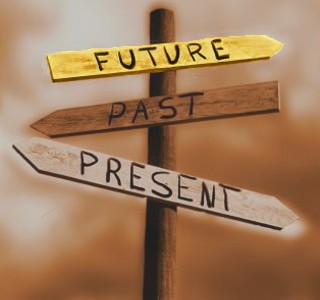I had thought the cities were
carefully differentiated by the details, and then brought together by a much
broader overall connection. However, their similarities run much closer then I
had previously imagined. “Polo said: ‘Every time I describe a city I am saying
something about Venice.’”(p.86) Now everything fits in a much more precise way.
All along, the “cities” had really just been describing one city made up of
different elements and situations. This discovery about the cities not being separate occurrences also modifies my thoughts on the very meaning of what
these cities represent. Although I won’t completely sever with my idea that the
cities represent pieces of information that make up a lifetimes worth of
knowledge, I do feel the need to modify it. With this new piece of vital
information, I think the city descriptions represent the future, past and
present.
The way
Marco Polo describes them, is pertinent to his own future, past, and present.
This is why Kublai Khan is constantly imagining his own cities, because he
wishes to relate Polo’s tales to his own future, past and present. “Now, each
city Marco described to him, the Great Khan’s mind set out on its own, and
after dismantling the city piece by piece, he reconstructed it in other ways,
substituting components, shifting them, inverting them.”(p.43)
If all the
different descriptions lead up to the same city and no matter what order you
arrange them in you always come up with the same conclusion, then why bother?
Why would Marco Polo go through all the trouble of conceiving each of Venice’s
characteristics as a separate city? Why not just lump everything together? Create
a continuous description of Venice from cover to cover, no breaks or
categories, just one large run-on piece. The reason for this is actually quite
simple. For there to be a whole, there must be separate pieces, which calls for
each characteristic to be described independently from the others.
“Marco Polo
describes a bridge, stone by stone. ‘But which is the stone that supports the
bridge?’ Kublai Khan asks. ‘The bridge is not supported by one stone or
another,’ Marco answers, ‘but by the line of the arch that they form.’ Kublai
Khan remains silent, reflecting. Then he adds: ‘Why do you speak to me of the
stones? If it is only the arch that matters to me.’ Polo answers: ‘Without
stones there is no arch.’ “(p.82) Similarly, without memories there is no past,
present or future. Each city description is equally important to the outcome.
There’s no single characteristic that is more important than the others.
Instead they are all elements laid out like cards on a table that taken
together form a whole deck. Each description builds upon the others with no
concern for order or importance. Together they create the much more complete
image of Venice.
In other
words each separate event adds towards the understanding of Marco’s past, present
and future. This is mirrored by Kublai Khan’s attempt to customize and tweak
the descriptions so they will amount to his own past, present and future.
Consciously or unconsciously we are doing just that. We listen to each one of
the characteristics and modify them slightly in order to create a coherent
collection of our own memories that together represent our past, present and
future.

No hay comentarios:
Publicar un comentario